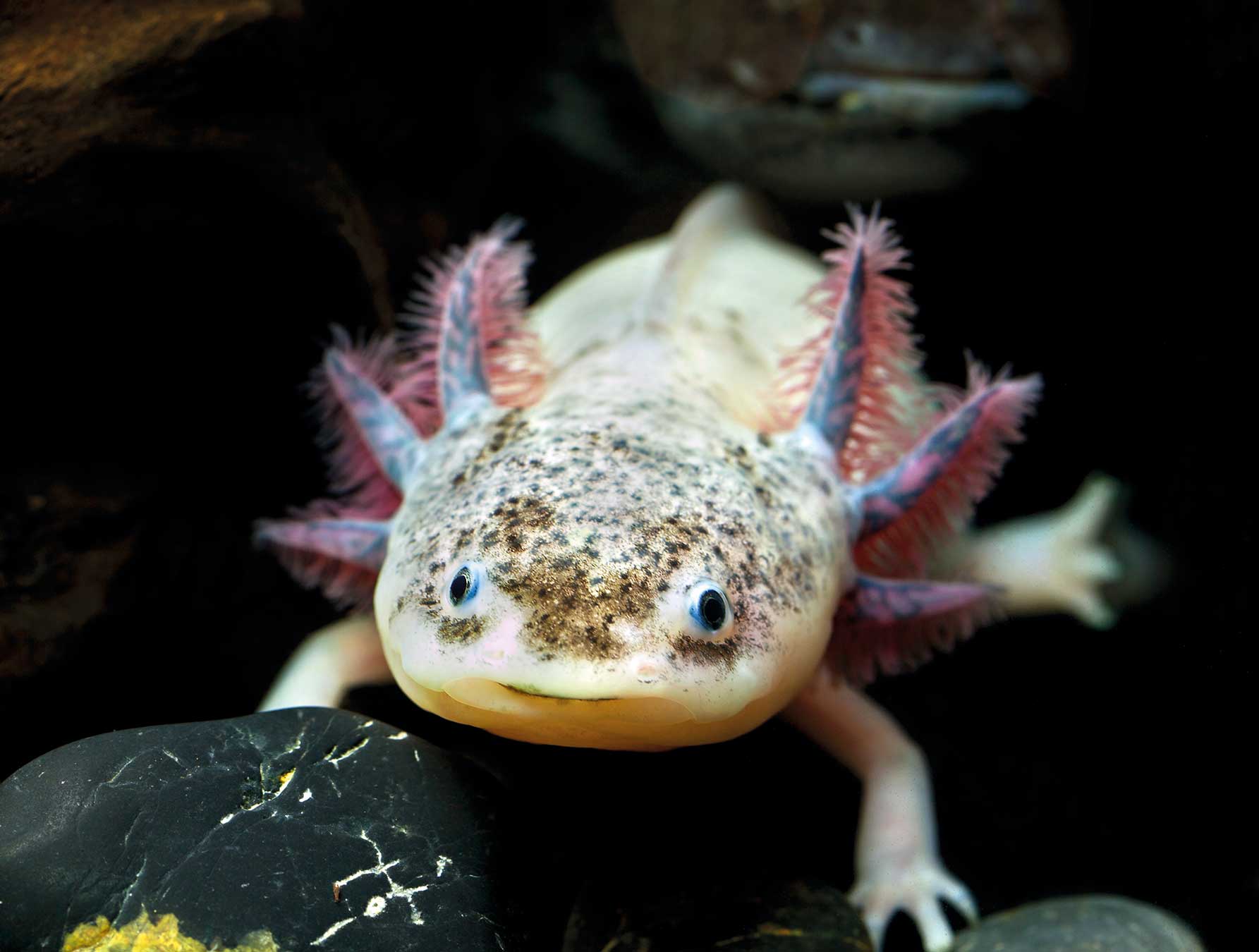The axolotl is a unique aquatic salamander native to Mexico. Known for retaining its larval features throughout life, it stays fully aquatic, with feathery gills on its head. Famous for its ability to regenerate limbs, spinal cord, and even parts of its heart, the axolotl is critically endangered in the wild but thrives in captivity and research settings.

Amazing Facts About the Axolotl
The axolotl is a unique aquatic salamander native to Mexico, known for retaining its larval features throughout life and for its ability to regenerate body parts.

Why does the axolotl stay in its larval form?
The axolotl exhibits neoteny, meaning it retains its juvenile, aquatic form throughout its life, rather than undergoing the typical metamorphosis into a terrestrial adult.
What do axolotls eat?
Axolotls are carnivorous, feeding on small fish, worms, and other aquatic invertebrates.
How do axolotls regenerate limbs?
Axolotls have remarkable regenerative abilities, capable of regrowing entire limbs, spinal cord segments, and even parts of their heart, due to specialized cells called blastemal cells that help form new tissue.
Are axolotls endangered?
Yes, axolotls are critically endangered in the wild, primarily due to habitat loss, water pollution, and the introduction of invasive species in their native habitat of Lake Xochimilco.
How long do axolotls live?
In the wild, axolotls typically live for about 10–15 years, while in captivity they can live up to 20 years with proper care.
Do axolotls make good pets?
Yes, axolotls can make interesting pets, as they are low-maintenance and peaceful creatures, though they require specific water conditions and diet to thrive in captivity.
What is unique about axolotls’ gills?
Axolotls have external, feathery gills that extend from the sides of their heads, which they use to breathe in oxygen from the water.
Can axolotls be found outside of Mexico?
While they are native to Mexico, axolotls are widely kept in research labs and aquariums around the world due to their fascinating regenerative properties.
How do axolotls reproduce?
Axolotls reproduce by laying eggs, which the female deposits in the water. The eggs hatch into larvae, which, like adults, retain their aquatic features.